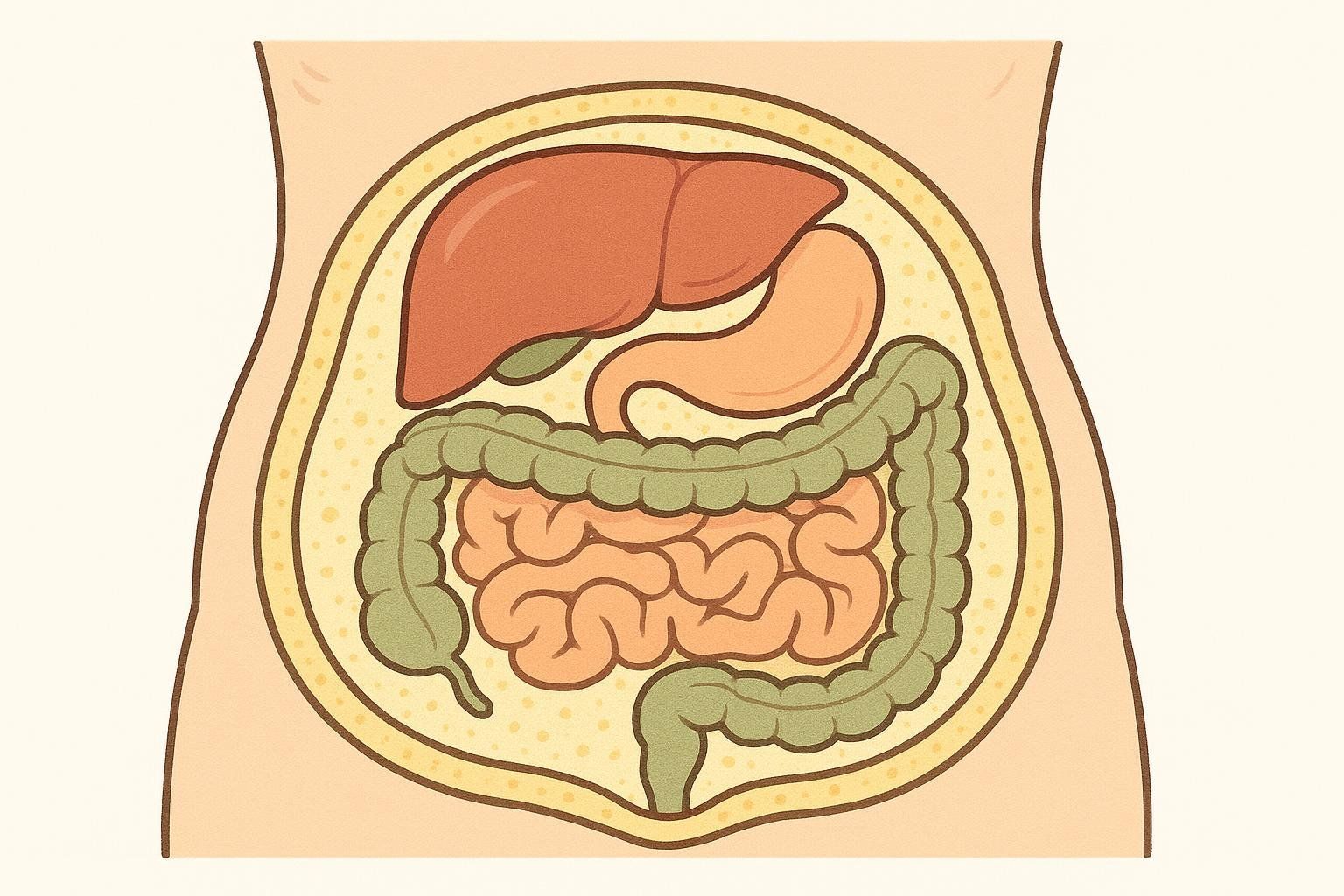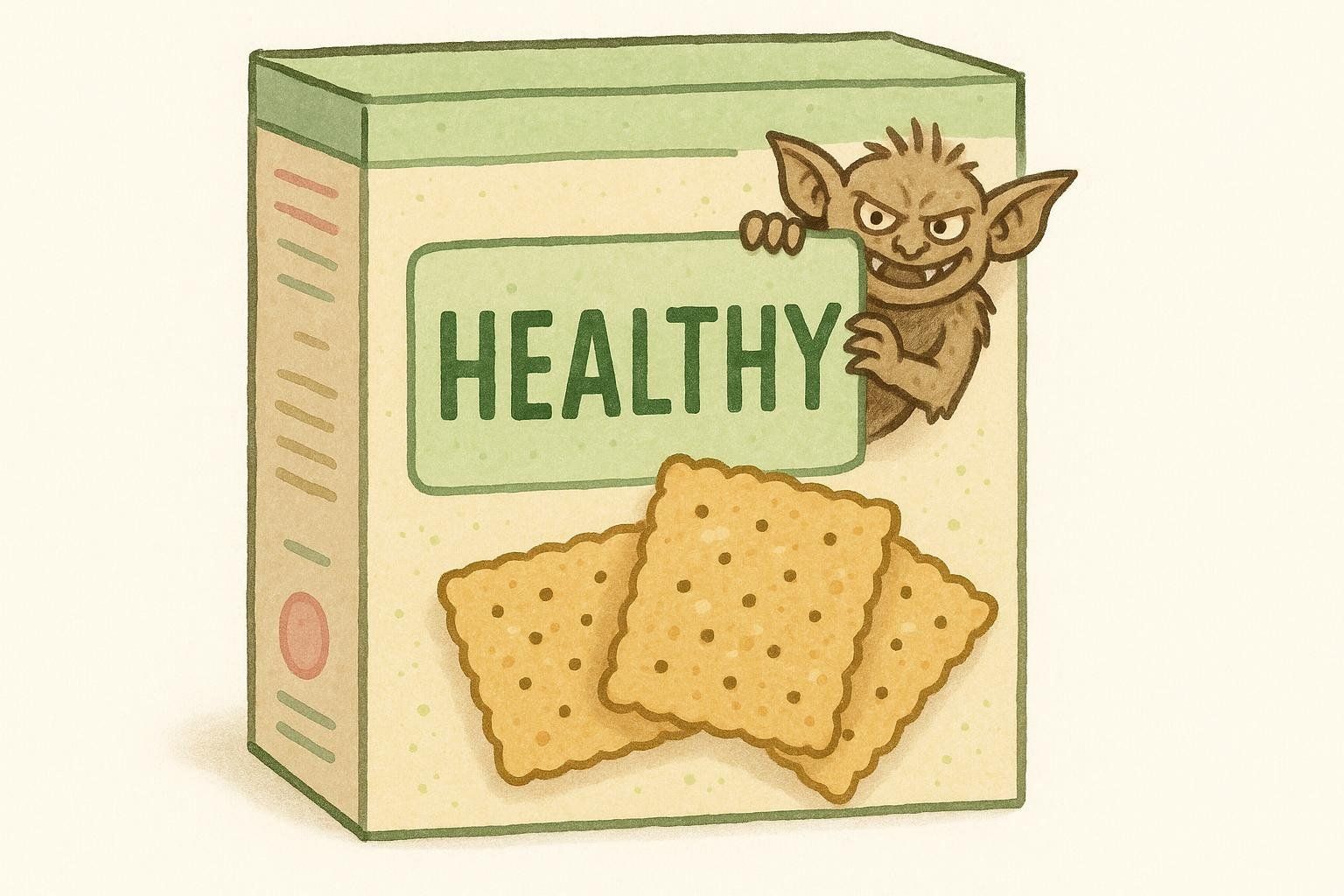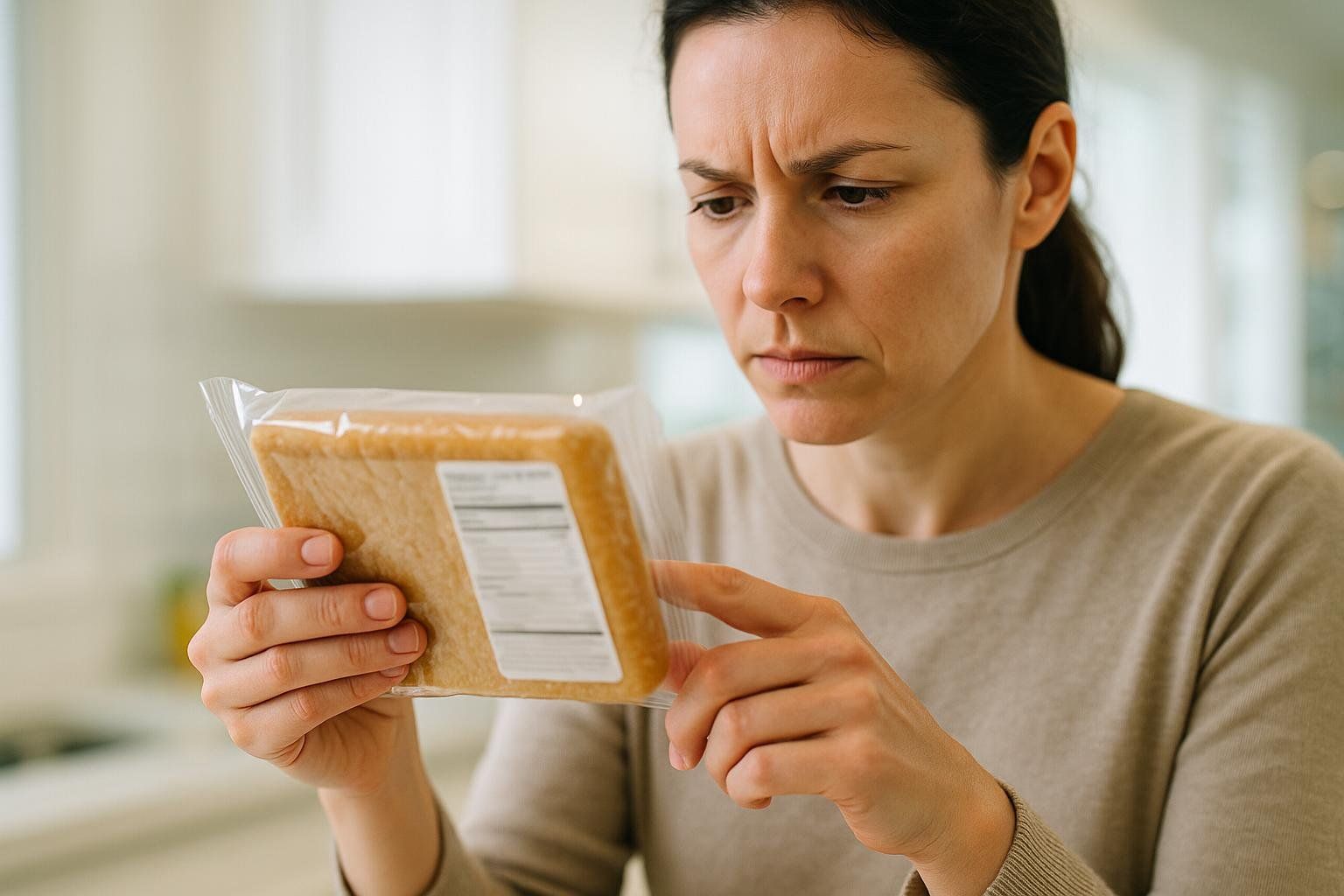Hidden Fat: Why It Matters and How to Banish It

Hidden Fat Uncovered: Why You Can’t See It, Why It Matters, and How to Banish It
You may look healthy on the outside, but internal “hidden fat” can still jeopardize your well-being. The term typically refers to visceral fat—the belly fat wrapped around your liver, pancreas, and other organs. Because it’s tucked behind the abdominal wall, you can’t pinch or see it.
Here’s what you’ll learn in this guide:
- How visceral fat forms and why it’s metabolically dangerous
- Simple and high-tech ways to measure it—plus why BMI often misses the mark
- Sneaky dietary hidden fats that accelerate visceral fat gain
- Why “skinny” people can harbor dangerous hidden fat (aka skinny-fat)
- Science-backed strategies and a 30-day action plan to banish it
1. What Exactly Is Hidden Fat?
Visceral fat: the fat you can’t pinch
Unlike subcutaneous fat that sits just under your skin, visceral fat hides behind your abdominal wall, sandwiched around vital organs.

Because you can’t see or squeeze it, excess amounts often go unnoticed until it causes trouble such as insulin resistance or high blood pressure (Cleveland Clinic).
Researchers sometimes call visceral fat “active” or “toxic” fat because it releases inflammatory cytokines, adipokines, and free fatty acids that disrupt metabolism and raise disease risk (Harvard Health).
Hidden fats in food labels
Visceral fat is the body’s hidden fat, but certain ingredients can be dietary hidden fats that feed those internal stores. Knowing how to spot them on labels helps you cut excess calories before they land around your organs.
“0 g trans fat” on a nutrition label doesn’t always mean zero. The U.S. Food and Drug Administration allows products with less than 0.5 g of trans fat per serving to be listed as 0 g (FDA Guidance). Two servings can add up to more than a gram of artery-clogging fat.

Refined seed oils and saturated fats present a different kind of stealth. Because they’re inexpensive and shelf-stable, manufacturers add them to everything from salad dressings to protein bars. Those extra fats quietly add calories and can contribute to an imbalanced omega-6 to omega-3 ratio, which may be pro-inflammatory if omega-3 intake is too low (Harvard T.H. Chan School of Public Health).
2. Why Hidden Fat Is More Than a Cosmetic Issue
Carrying extra visceral fat isn’t just about how snug your waistband feels; it actively interferes with critical organs and hormonal signals. Decades of research link high visceral fat to serious health problems, including:
- Heart disease & stroke. Visceral fat is strongly linked to atherosclerosis and hypertension (Healthdirect).
- Type 2 diabetes. Excess internal fat drives inflammation and insulin resistance, raising diabetes risk (Columbia University Irving Medical Center).
- Cognitive decline. MRI studies show higher visceral fat correlates with smaller brain volume in areas tied to memory (RSNA press release).
- Surgical complications. Abdominal surgery is harder and recovery slower when visceral fat crowds organs (Cleveland Clinic).
3. Skinny-Fat: When “Normal” Body Weight Hides Elevated Risk
You can have a healthy BMI and unhealthy amounts of hidden fat.
The “skinny-fat” body type—also called normal-weight obesity or normal-weight central obesity—describes people whose scale weight looks fine but who carry a disproportionately high percentage of body fat, especially around the organs.
What the research says
- A 2023 cross-sectional study of 3,001 adults found that 26 % of normal-BMI men and 38 % of normal-BMI women had excess body fat (> 25 % and > 35 %, respectively) when measured by DEXA. These normal-weight obese participants showed higher triglycerides and LDL cholesterol than lean counterparts, despite having the same BMI (Frontiers in Nutrition).
- An NHANES analysis (2009–2018) involving 26,825 adults reported that people with a normal BMI but large waist circumference had more than double the risk of developing diabetes compared with truly lean peers (OR = 2.37, 95 % CI 1.75–3.23) (Frontiers in Nutrition).
Why skinny-fat can be more dangerous
- False sense of security. Routine check-ups relying on BMI may miss central obesity, delaying lifestyle changes.
- Less muscle mass. Many skinny-fat individuals have low lean tissue, which further reduces insulin sensitivity and basal metabolic rate.
- Hidden metabolic strain. Visceral fat releases inflammatory molecules even in smaller absolute amounts, so organ damage can start long before weight looks “overweight.”

Curious if you fall into this category? Check out our post on skinny fat for a deeper dive and targeted strategies.
4. How Do You Know If You’re Carrying Hidden Fat?
| Method | What it measures | Pros | Cons |
|---|---|---|---|
| Waist circumference | Abdominal girth | Cheap, quick | Can’t separate visceral vs. subcutaneous fat |
| Waist-to-height ratio | Belly size relative to stature | Better predictor than BMI; cut-off ≈ 0.5 | Still an estimate |
| Waist-to-hip ratio | Central vs. peripheral fat | Simple math | Same limitation |
| Body Mass Index (BMI) | Weight vs. height | Universally used | Misses “skinny-fat” and athletes |
| DEXA scan | Precise regional fat, incl. visceral | ± 1–2 % error; tracks change over time | Requires appointment |
According to the Cleveland Clinic, elevated visceral fat risk starts at a waist size of 35 inches or more for women and 40 inches or more for men.
A DEXA body composition scan is widely considered the gold standard for quantifying visceral fat and spotting skinny-fat profiles. Schedule one with BodySpec to establish your baseline, then re-scan every 3–6 months to confirm progress (Understanding DEXA Scans).
5. Sneaky Dietary Fats to Watch For
| Food category | Common hidden fat | Where it lurks |
|---|---|---|
| Baked goods | Partially hydrogenated oils (trans fat) | Pie crusts, pastries, crackers |
| Coffee creamers | Trans fat + palm oil | “Non-dairy” powder creamers |
| Snack chips | Refined seed oils | Sunflower, soybean, cottonseed oil |
| Frozen meals | Saturated fat + trans fat | Pizza, breaded chicken, pot pies |
| Restaurant fryers | Oxidized seed oils | Fries, chips, tempura |
| “Health” bars | Palm kernel oil | Protein or granola bars |

Label-reading hacks
- Scan the ingredients list for “partially hydrogenated,” “shortening,” or any oil high on the list.
- If a product lists 0 g trans fat but shows partially hydrogenated oil, put it back.
- Prioritize cooking fats like olive, avocado, or canola oil and keep overall omega-3 intake robust.
6. Proven Strategies to Reduce Hidden Fat
1. Dial in nutrition
- Emphasize balanced whole-food eating: veggies, fruits, legumes, lean protein, and omega-3-rich fats (salmon, flax).
- Limit added sugar to < 25 g per day (≈ 6 tsp).
- Replace refined carbs with high-fiber whole grains.
2. Move with purpose
- HIIT – short bursts of all-out effort improve insulin sensitivity and can reduce visceral fat. A 2023 systematic review found HIIT produced greater reductions in waist circumference and percentage body fat than moderate-intensity continuous training.
- Strength training – lifting weights 2–3 times weekly preserves lean mass while you lose fat. Need a plan? See our How to Lose Visceral Fat guide for sample workouts.
3. Prioritize sleep
A Mayo Clinic randomized crossover study found that just two weeks of sleeping 4 hours per night led to an 11 % increase in visceral fat, even though participants gained only about one pound overall (Mayo Clinic). Aim for 7–9 hours nightly.

4. Manage stress
Mindfulness practices, yoga, or even a daily walk can help lower cortisol—the stress hormone linked to increased abdominal fat storage (Harvard Health).
5. Limit alcohol consumption
U.S. Dietary Guidelines advise ≤ 1 drink per day for women and ≤ 2 for men to minimize health risks, including weight gain and visceral fat accumulation (NIAAA).
7. Your 30-Day Hidden Fat Action Plan
- Book a BodySpec DEXA to establish your visceral fat baseline.
- Audit your pantry for partially hydrogenated oils and swap them for healthier options.
- Follow the 5-step strategy above consistently for the next month.
- Re-measure – use waist tape weekly, then schedule a follow-up DEXA in three months.
With steady effort, many people notice measurable reductions in visceral fat over several months.
Key Takeaways
- Hidden fat primarily refers to visceral fat, the internal fat surrounding your organs—and you can have it even if you’re “skinny.”
- Stealthy dietary fats can accelerate visceral fat storage.
- Visceral fat is linked to heart disease, diabetes, and cognitive decline.
- DIY measurements give clues, but a DEXA scan is the most accurate way to monitor progress and identify skinny-fat profiles.
- Combine smart nutrition, focused exercise, adequate sleep, stress control, and moderated alcohol to shrink hidden fat stores.
- Ready to act? Schedule your BodySpec scan today and turn invisible risk into visible results.


